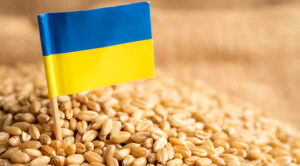
In 2024, imports of aluminum and aluminum products increased by 21.7% to $446.006 million (in December – $36.943 million). Exports of aluminum increased by 27.4% to $124.408 million, compared to $8.426 million in December.
Aluminum is widely used as a structural material. The main advantages of aluminum are its lightness, stamping resistance, corrosion resistance, high thermal conductivity, and non-toxicity of its compounds. In particular, these properties have made aluminum extremely popular in the production of cookware, aluminum foil in the food industry, and packaging. The first three properties have made aluminum the main raw material in the aviation and aerospace industries (recently it has been replaced by composite materials, primarily carbon fiber). After the construction and production of packaging, such as aluminum cans and foil, the energy sector is the largest consumer of the metal.

In 2024, Ukraine exported 44.903 thousand tons of manganese ore to the United States once in January for $6.563 million, breaking the two-year absence of supplies to foreign markets.
According to statistics released by the State Customs Service (SCS), there were no exports of manganese ore in February-December.
At the same time, the country imported 84.293 thousand tons worth $18.302 million from Ghana (98.85%), Brazil (0.99%) and Belgium (0.11%) in 2024, with no imports in October-November.
Import growth occurred in July and August last year, when 17.811 thousand tons were imported in July, 10.017 thousand tons in August, and in September it increased to 56.447 thousand tons.
In 2023, Ukraine imported 44.203 thousand tons of manganese ore.
As reported, Ukraine did not export manganese ore in 2022 and 2023, and in 2021 exported 770 tons for $89 thousand. In 2023, it imported 44.203 thousand tons for $7.020 million.
In 2022, Ukraine reduced imports of manganese ore and concentrate in physical terms by 68.1% compared to the previous year to 135,798 thousand tons, and in monetary terms by 66.4% to $18.098 million. The main imports came from Ghana (99.16% of supplies in monetary terms), Slovakia (0.71%) and Belgium (0.10%). In August-November 2022, there were almost no imports of manganese ore.
In addition, it was reported that the Pokrovsky Mining and Processing Plant (PGOK, formerly Ordzhonikidze Mining and Processing Plant), a part of the Privat Group, and Marhanetsky Mining and Processing Plant (MGOK, both in Dnipropetrovska oblast), in late October and early November, had been shutting down. ) stopped mining and processing crude manganese ore in late October and early November 2023, while NFP and ZFP stopped smelting ferroalloys, and later ferroalloy enterprises slightly resumed production.
In Ukraine, Pokrovske and Marhanets mining and processing plants extract and enrich manganese ore.
Manganese ore is consumed by ferroalloy companies.

In 2024, Ukrainian mining companies increased exports of iron ore in physical terms by 89.8% year-on-year to 33 million 699.722 thousand tons.
According to the statistics released by the State Customs Service, foreign exchange earnings from iron ore exports increased by 58.7% to $2 billion 803.223 million in the period under review.
Exports of iron ore were carried out mainly to China (36.47% of supplies in monetary terms), Poland (17.27%) and Slovakia (17.15%).
In 2024, Ukraine imported iron ore for $414 thousand in a total volume of 2,042 thousand tons, while in 2023, 250 tons of this raw material were imported for $135 thousand. Imports in 2024 were carried out from Poland (49.64%), the Netherlands (22.89%) and Norway (13.49%).
As reported, in 2023, Ukraine decreased exports of iron ore in physical terms by 26% compared to 2022 – to 17 million 753.165 thousand tons, foreign exchange earnings from iron ore exports amounted to $1 billion 766.906 million (down 39.3%). Iron ore was exported mainly to Slovakia (28.39% of supplies in monetary terms), the Czech Republic (19.74%) and Poland (19.56%).
Last year, Ukraine imported iron ore worth $135 thousand in the total amount of 250 tons. During this period, imports were made from Norway (34.81%), Italy (28.89%) and the Netherlands (28.89%). While in 2022, iron ore was imported for $65 thousand in a total volume of 101 tons.

Since the beginning of 2024-2025 marketing year and as of January 8, Ukraine exported 22.442 mln tonnes of grains and pulses, 705 thsd tonnes of which were shipped this month, the press service of the Ministry of Agrarian Policy and Food reported, citing the data of the State Customs Service of Ukraine.
According to the report, as of the same date last year, the total shipments amounted to 19.422 mln tons, including 1.03 mln tons in January.
In terms of crops, since the beginning of the current season, 9.977 million tons of wheat have been exported (209 thousand tons in January), 1.976 million tons of barley (8 thousand tons), 10.8 thousand tons of rye (0) and 10.162 million tons of corn (487 thousand tons).
The total export of Ukrainian flour since the beginning of the season as of January 8 is estimated at 38.1 thsd tonnes (0.5 thsd tonnes in January), including 35 thsd tonnes of wheat (0.5 thsd tonnes).

Ukraine’s exports in January-December 2024 increased by 15.5% compared to 2023 to $41.6 billion, while imports increased by 11.3% from $63.5 billion to $70.7 billion, the State Customs Service (SCS) reported in a telegram.
“At the same time, taxable imports amounted to $57.4 billion, which is 81% of the total volume of imported goods. The tax burden per 1 kg of taxable imports in 2024 amounted to $0.51/kg, which is 5% more than in 2023,” the State Customs Service said.
According to the published information, most of the goods were imported to Ukraine from China – $14.4 billion, Poland – $7 billion, and Germany – $5.4 billion. At the same time, Ukraine exported the most goods to Poland – $4.7 billion, Spain – $2.9 billion, and Germany – $2.8 billion.
In the total volume of goods imported in January-December 2024, 65% of the goods were in the category of machinery, equipment and transport – $25 billion (UAH 172.3 billion, or 29% of customs payments, were paid to the budget during customs clearance), chemical products – $11.7 billion (UAH 87.7 billion, or 15% of customs revenues), and fuel and energy – $8.9 billion (UAH 157.6 billion, or 27% of revenues, were paid during customs clearance).
The top three most exported goods from Ukraine are food products – $24.6 billion, metals and metal products – $4.4 billion, and machinery, equipment and transport – $3.5 billion.
The State Customs Service added that in 2024, UAH 311.3 million was paid to the budget during customs clearance of exports of goods subject to export duties.

Farmak Pharmaceutical Company (JSC Farmak, Kyiv) has started exporting to Pakistan, the first product supplied is an injectable drug for general anesthesia, which is also registered in the UK.
According to the company’s press release, Pakistan became the second country in South Asia after Jordan to which Farmak supplies its products. Farmak’s presence in the region is ensured by the Farmak International Middle East & Africa team.
In general, Farmak exports its products to more than 60 countries, including 15 EU countries, as well as countries of Central and South America, the Middle East, Asia, Africa and Australia.
As reported, in 2023, Farmak increased its net profit by 18% compared to 2022, to UAH 1.557 billion.
Farmak Group is the leader of the Ukrainian pharmaceutical market in monetary terms, has two production sites in Ukraine and a production site in Spain, as well as 11 international representative offices and marketing and distribution companies in countries such as Poland, Czech Republic, Slovakia, the United Kingdom, the United Arab Emirates, Vietnam, Switzerland, Kazakhstan, Uzbekistan, Kyrgyzstan, and Moldova. The ultimate beneficial owner of Farmak is the Chairman of the Supervisory Board Filya Zhebrovska (80% of the company’s shares).